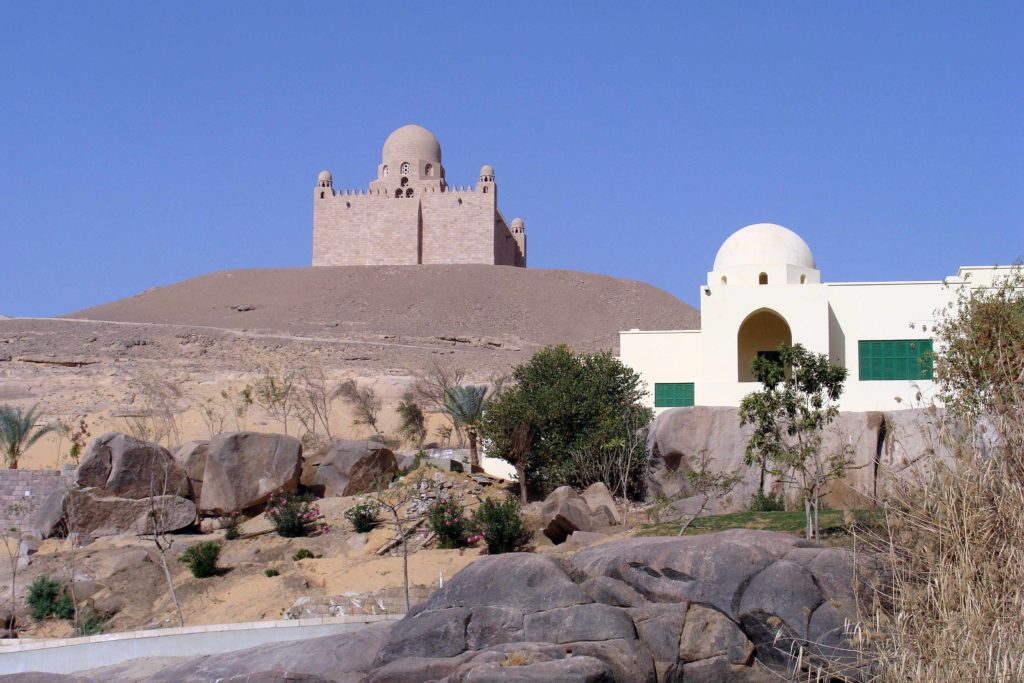
Presiding prominently atop the West Bank’s cliff, the Aga Khan Mausoleum was built to hold the tomb of Sir Sultan Muhammad Shah (1877-1957), leader of the Shi’a Islam Nizari Ismaili sect. He is chiefly remembered for his various charitable acts, setting up educational and medical institutions throughout Africa and Asia, as well as for the influential role he played in discussions about the partition of India.
Although born in Karachi (then part of India under British colonial rule), the Aga Khan often summered with his family in Aswan and so had a deep connection to this part of Egypt. You can’t visit the actual mausoleum, but you’re sure to spot it sitting high above the Nile’s bank








